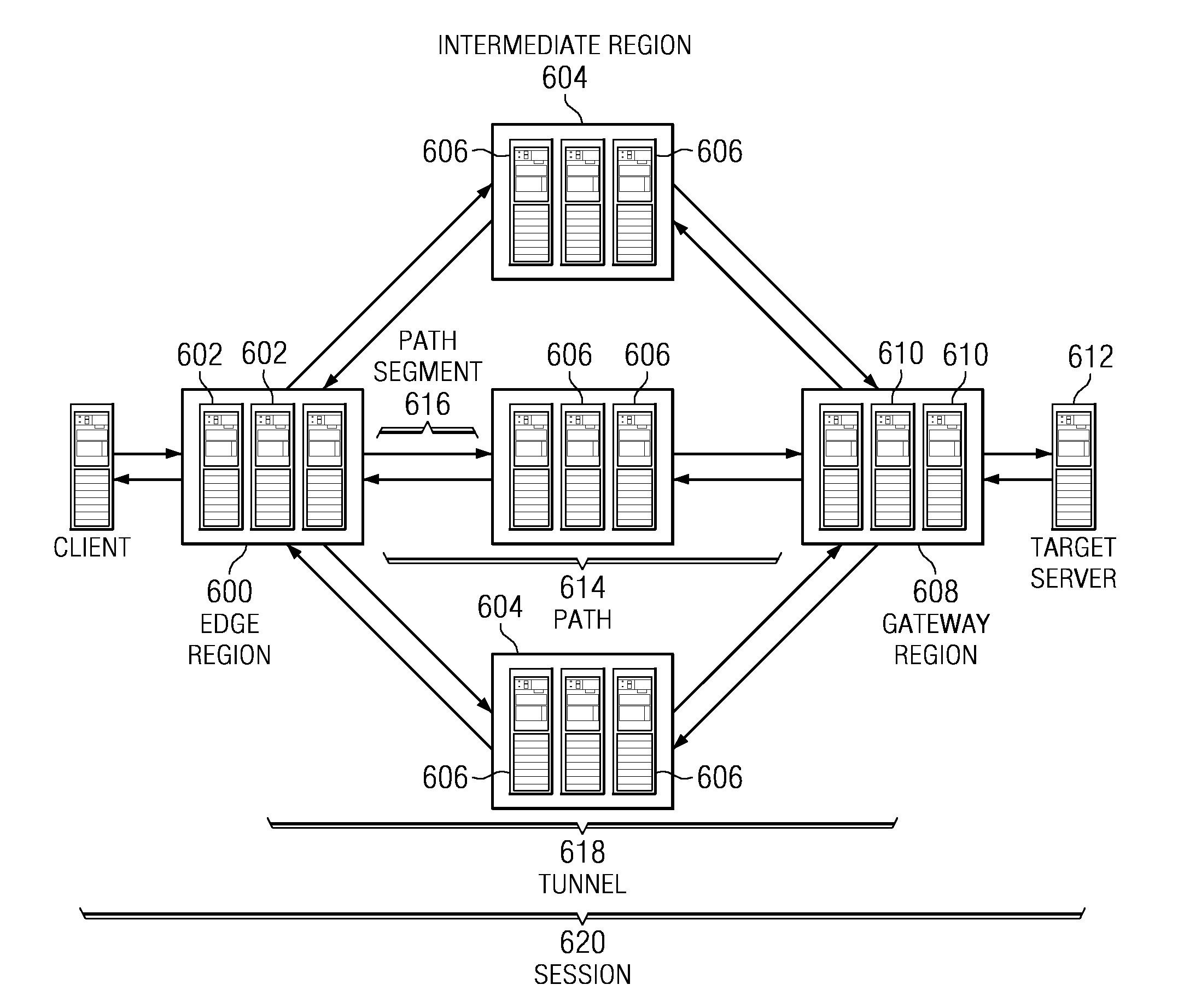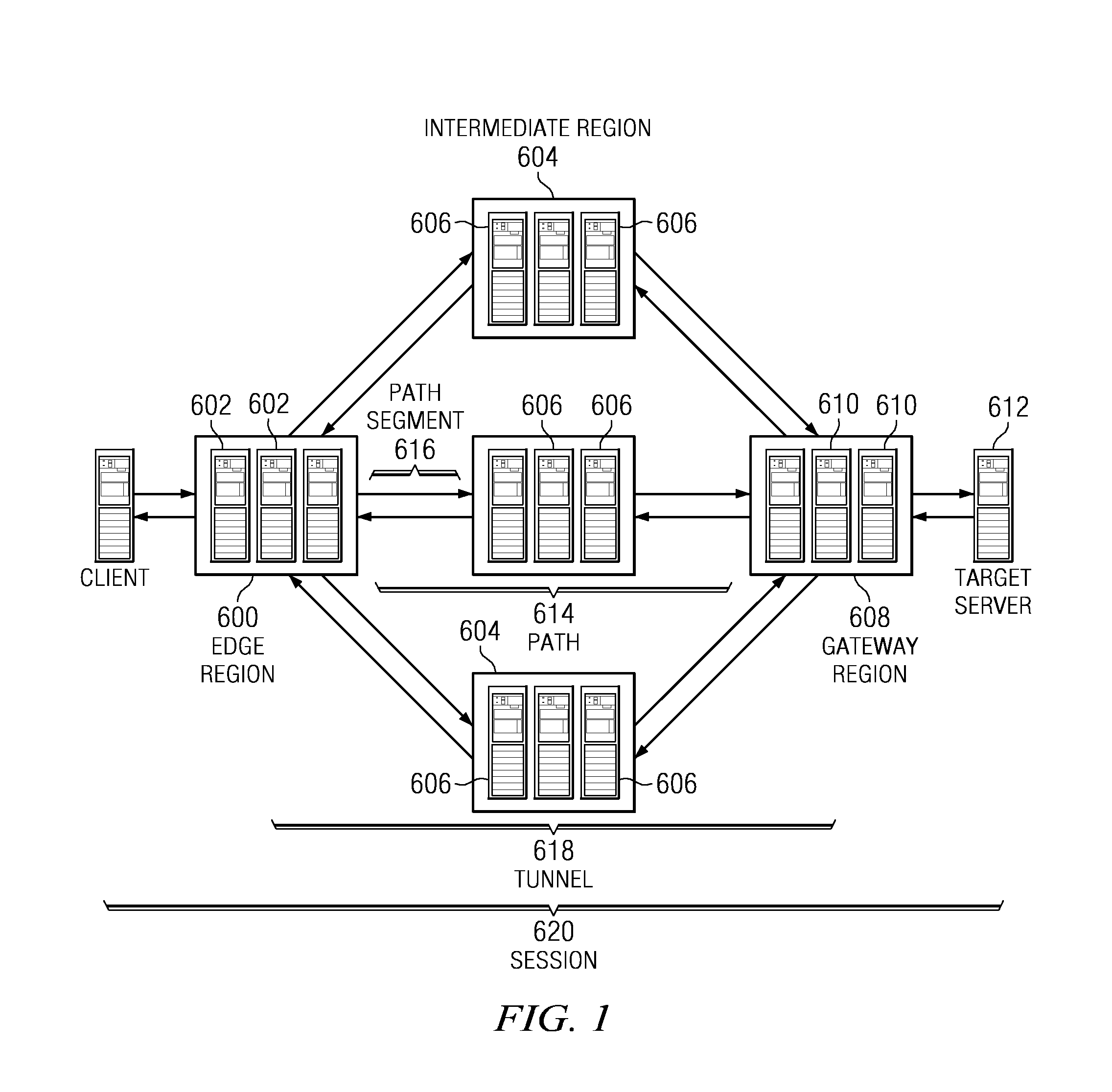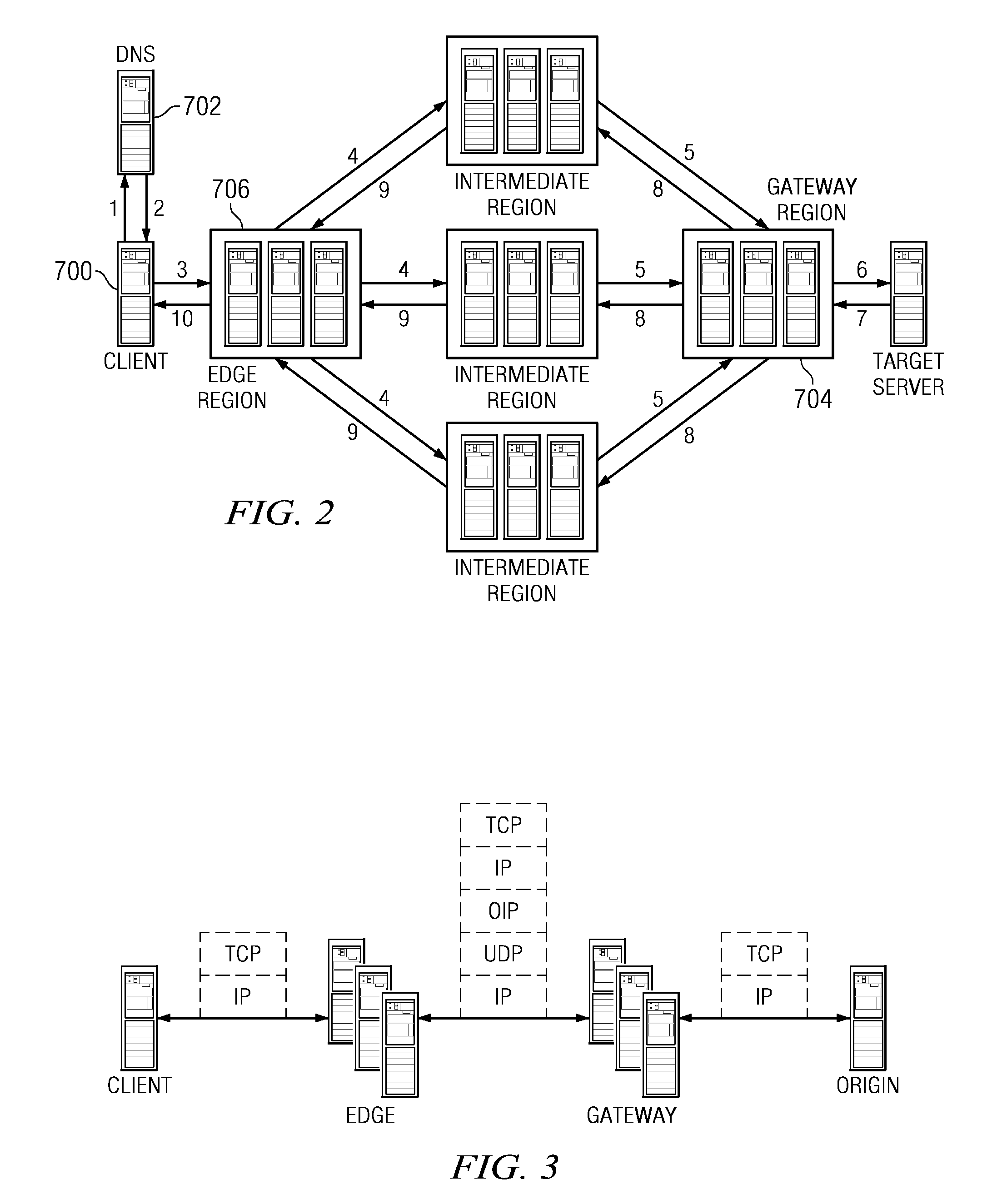Reducing TCP connection establishment time in an overlay network
a technology of overlay network and connection establishment time, which is applied in the field of reducing tcp connection establishment time in an overlay network, can solve the problems of increased connection establishment time, increased time, and poor tcp performance, and achieves high performance gains, reduce connection establishment latency, and increase fault tolerance
- Summary
- Abstract
- Description
- Claims
- Application Information
AI Technical Summary
Benefits of technology
Problems solved by technology
Method used
Image
Examples
Embodiment Construction
[0020]The subject disclosure may be implemented within the context of an overlay IP (OIP) routing mechanism that comprises a portion of a content delivery network (CDN). As is well-known, a content delivery network typically comprises a set of machines distributed around the Internet. Many of the machines are servers located near the edge of the Internet, i.e., at or adjacent end user access networks. Third party web sites and application providers offload delivery of content and applications to the CDN, which operates as a managed service. The CDN includes distributed infrastructure for data collection, monitoring, logging, alerts, billing, management and other operational and administrative functions. A typical CDN machine comprises commodity hardware (e.g., an Intel Pentium processor) running an operating system kernel (such as Linux or variant) that supports one or more applications. To facilitate content delivery services, for example, given machines typically run a set of appl...
PUM
 Login to view more
Login to view more Abstract
Description
Claims
Application Information
 Login to view more
Login to view more - R&D Engineer
- R&D Manager
- IP Professional
- Industry Leading Data Capabilities
- Powerful AI technology
- Patent DNA Extraction
Browse by: Latest US Patents, China's latest patents, Technical Efficacy Thesaurus, Application Domain, Technology Topic.
© 2024 PatSnap. All rights reserved.Legal|Privacy policy|Modern Slavery Act Transparency Statement|Sitemap



